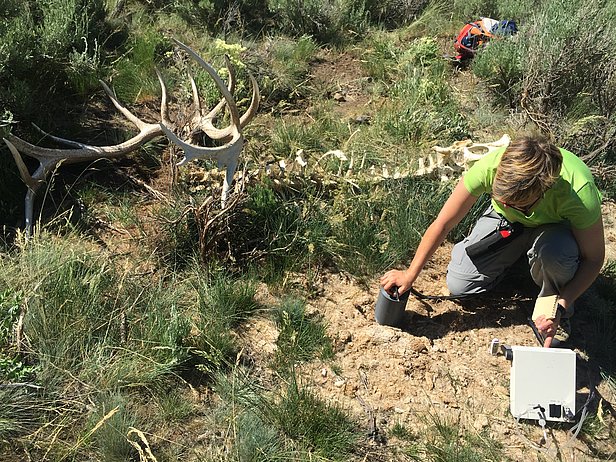How ungulates move nutrients
Anita Christina Risch
2015 - 2025
Ungulates can move nutrients over long distances. In this project we study the importance of such nutrient movements for soil diversity and soil processes across the landscape in collaboration with Joseph Bump (University of Minnesota).

Ungulates can move significant amounts of nutrients in space and time. Diurnal movements of nutrients may, for example, happen between preferred grazing and preferred resting places: they consume plant biomass at their grazing sites and deposit dung and urine where they rest. Namely domestic livestock, like cattle or sheep, show such behavior, but it is less pronounced in wild ungulates such as red deer. Red deer, however, may move larger amounts of nutrients seasonally when migrating from their summer- to their winter ranges. The nutrients accumulated in the animal bodies in summer as reserves are used up and released over winter through excrements. In addition, forage shortage during winter may result in enhanced fatalities, which add nutrients from decomposing carcasses to the winter ranges. In areas with large predators (mainly wolves), nutrient movement by deer might be modified due to different temporal and spatial patterns in wolf kills.
In this research project we aim to assess how wild ungulates alter nutrient patterns in space and time across the landscape and how these patterns impact soil diversity and soil processes. We include areas hardly influenced by large predators (for example Swiss National Park) as well as areas with significant activities of large predators (for example Yellowstone National Park).